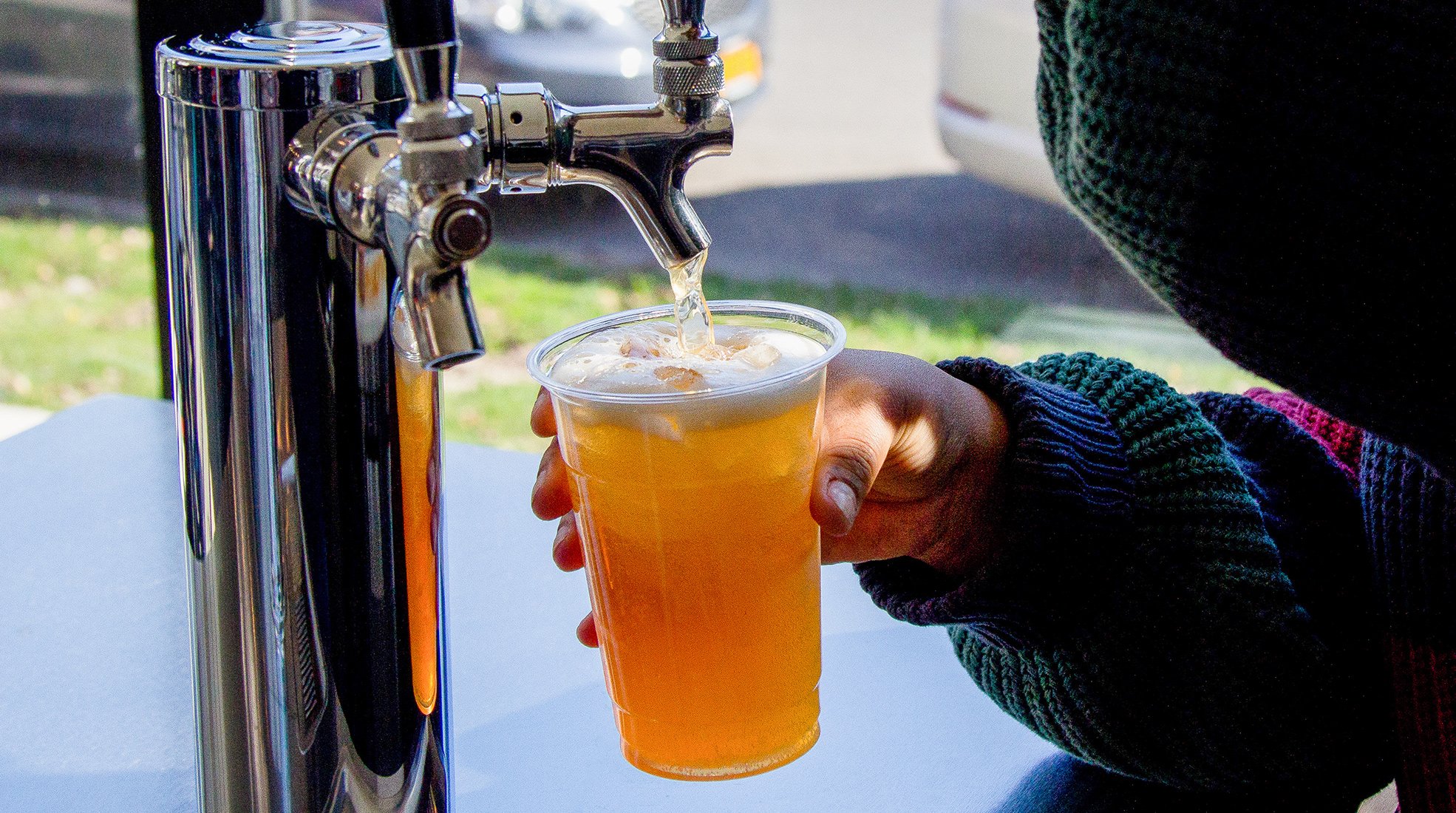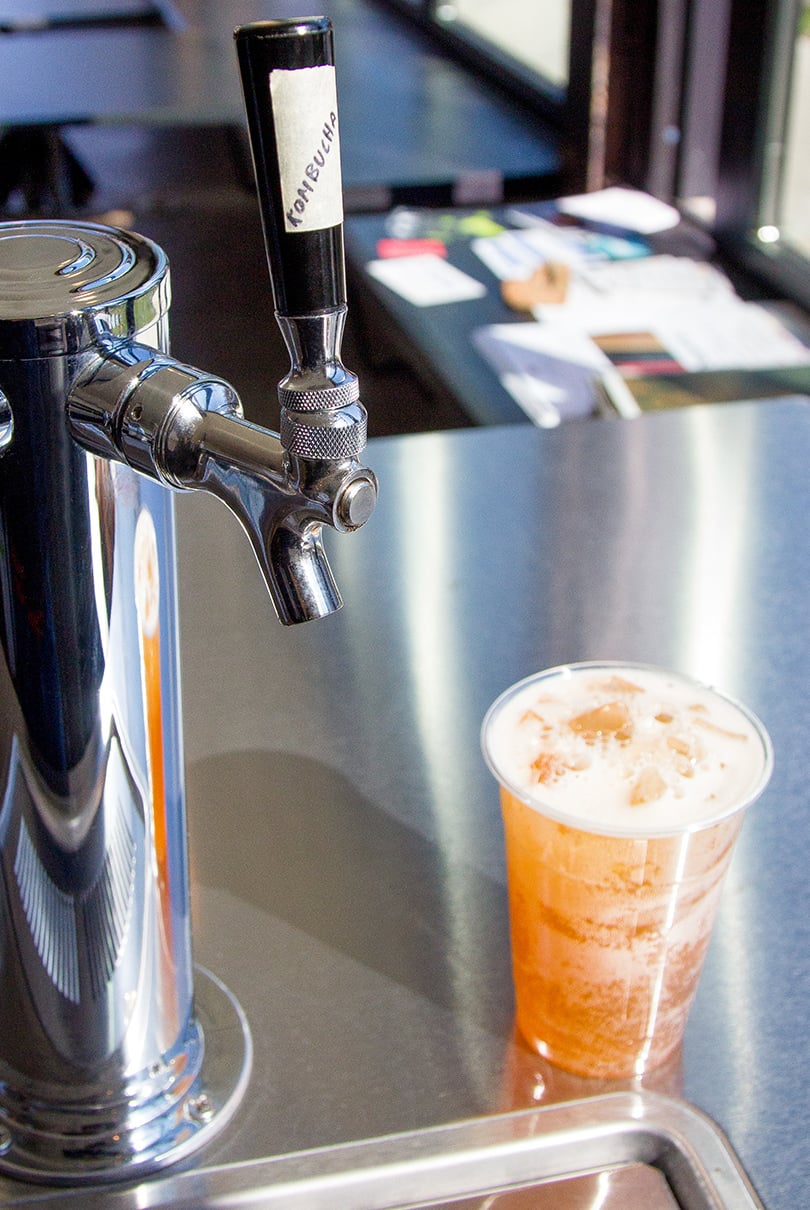
It’s official. Fermented, probiotic-rich kombucha is officially a mainstream beverage and the largest growing market in the functional beverage category. According to a report by Grand View Research, consumers purchased $760 million worth of kombucha in 2016, up from $400 million in 2014. And its growth shows no signs of slowing. Kombucha is expected to grow by 23 percent through 2025.
With kombucha fully entrenched as a beverage in demand, grocery stores, health and fitness studios, and even bars and restaurants have clamored to make kombucha accessible to their clients and customers. The trend has also inspired a growing population of kombucha home brewers in need of a method for storing and serving their hard-earned work. The solution many have landed on? Putting kombucha on tap.
Kombucha on tap relies on the same draft technology as beer and wine. With the pull of a handle, kegged kombucha held in cold storage is forced by way of gas pressure through food-safe lines to a waiting glass.
Kegging your kombucha requires less time and packaging than bottling. Kegs and the growlers people use to transport draft kombucha are entirely reusable.
When you keg kombucha, you have the option to force carbonate the batch to your taste rather than rely on natural conditioning and priming sugars.
If you are a commercial customer, having a kombucha draft system allows you to pour small tastes of what’s on tap for indecisive or inquisitive customers. Just be sure to factor in the cost of samples when pricing out your batch.

If you are a brewer and want to dispense on tap, you need to first keg your kombucha. Home brewers and smaller-scale producers will want to use new or refurbished 5-gallon Cornelius kegs.
Once you obtain your keg(s), add your kombucha after first fermentation. Be sure to filter it well beforehand to remove any sediment from yeast or flavoring agents that might otherwise build up in the coupler or lines and cause foaming issues down the road. And be sure to remove the SCOBY.
Once in the keg, you can let kombucha carbonate naturally by adding sugar to the batch, or you can force carb your kombucha to taste with CO2. To perform the latter, chill your keg to 38 degrees and then hook it up to CO2 at a PSI somewhere in the range of 20 to 30. Let it sit at this high PSI, tasting every so often, until you reach your desired carbonation level. This process will probably take four or five days.
If you are not a brewer, you can obtain filled kegs of kombucha from your favorite local kombucha brewery.
Once you’ve kegged and carbonated your kombucha or purchased a keg of kombucha from your favorite local brewery, it is ready to hook up to a draft system. Draft kombucha requires some special equipment.
Required Equipment
Optional Equipment
You should also consider splurging on a Perlick flow-control faucet. This specialized faucet is not absolutely necessary, but it is recommended to help counteract foaming issues that might arise with kombucha’s ambiguous carbonation level.
There are two primary setup options for pouring kombucha:


Have questions about your unique program or setup? Give our draft specialists a call at 1.888.415.2803 or fill out the form below.
Order before 2:00 pm EST
No Restocking Fees
Through SSL Protection
Call 877.636.3673